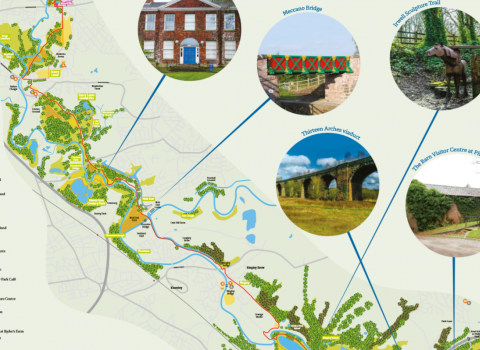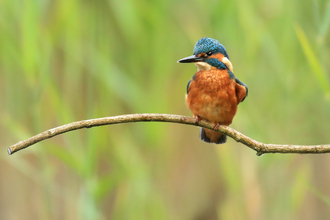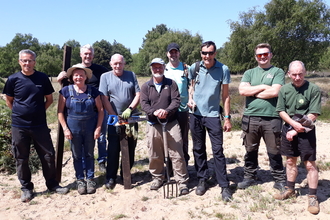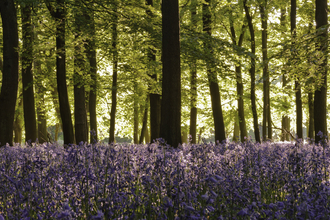Upper Bradshaw Valley Local Nature Reserve
Where bluebells meet industrial relics
Upper Bradshaw Valley Local Nature Reserve is a beautiful woodland valley full of bluebells and birds following the gently bubbling Bradshaw Brook.
The northern end of the site starts with the dam of Jumbles Reservoir. Jumbles was built purely as a compensation reservoir to keep a level flow of water running along Bradshaw Brook and was opened by the Queen in 1971. Jumbles is a variation of the term ‘Dumbles’, which traditionally meant a wooded ravine around a fast flowing stream and perfectly describes the reserve that we see today.
What can you see at Upper Bradshaw Valley?
On a spring visit to this former bleach works site you’ll find that gently nodding bluebells have replaced the once billowing chimneys of Bradshaw Works. Remains of this industry can be seen in the Leat or Mill Race which still follows the line of the Kingfisher Trail. Now home to a thriving wildlife population, the site is testament to the way in which nature can reclaim the land.
Look out for dippers, grey wagtails, herons and of course the iridescent kingfisher along the river. In the woods nuthatches, treecreepers and great-spotted woodpeckers are regularly seen clinging to the mighty trees, while buzzards circle overhead and sparrowhawks flash through the branches.
The history of Upper Bradshaw Valley
Walking through this land today is a much more pleasant experience than it would have been in the time of the bleachers. During the industrial revolution you'd have contended with horrendous pollution (when the river ran different colours depending on the day of the week!) but if you head even further back in time things get even worse.
Nuthatches, treecreepers and woodpeckers cling to mighty trees
Before the process was industrialised bleaching was carried out on a much smaller scale by Whitsters who would lay cloth out on the grassy fields, open to the bleaching power of the sun. This of course attracted nefarious people who intended to make some quick money by stealing the cloth. To combat this the Bradshaw bleachers would have watchmen put out man-traps (think bear trap) and loaded guns fired by a trip wire. If you were lucky enough to get caught rather than coming across the traps then you would either be deported to the colonies or executed. One particularly grizzly local tale tells of James Holland, who was executed for the offence just described. To make sure everybody got the message the local employers made their entire workforce watch the hanging.
Today when you watch where you put your feet all you have to worry about is the odd puddle!
To find out more about the history of Upper Bradshaw Valley Local Nature Reserve, click here to see the excellent publications of the Turton Local History Society, from whom much of the above information originates.
Know before you go
It is also worth noting that Bradshaw Fly Fishers have a lease for the brook through much of the site. They are very active in conservation and work to a management plan to increase the suitability of the habitat for riverflies and fish, and also monitor for pollution.
Access: Jumbles Country Park Car Park off Bradshaw Road, Bolton.
Accessible: Not suitable for those with limited mobility.
Upper Bradshaw Valley Local Nature Reserve is owned by Bolton Council.

Find out more
Explore more sites along the Kingfisher Trail and plan your trip along this fascinating route.
How you can help
You can help us maintain sites along the Kingfisher Trail for people and wildlife by becoming a member, volunteering or making a donation.
Choose one of the options below and protect the wild spaces on your doorstep.



